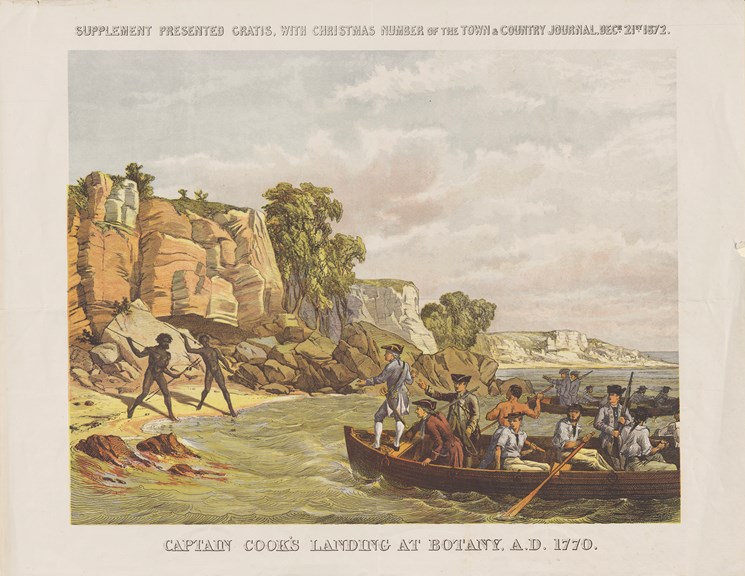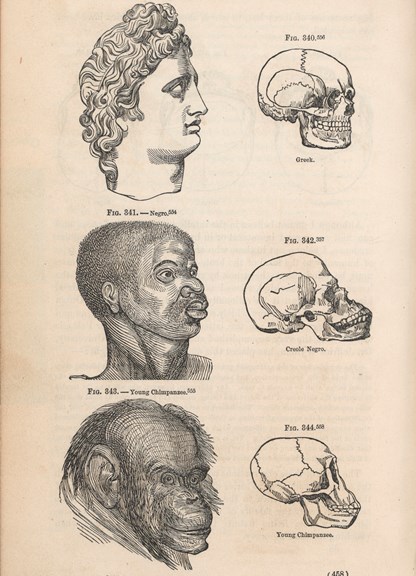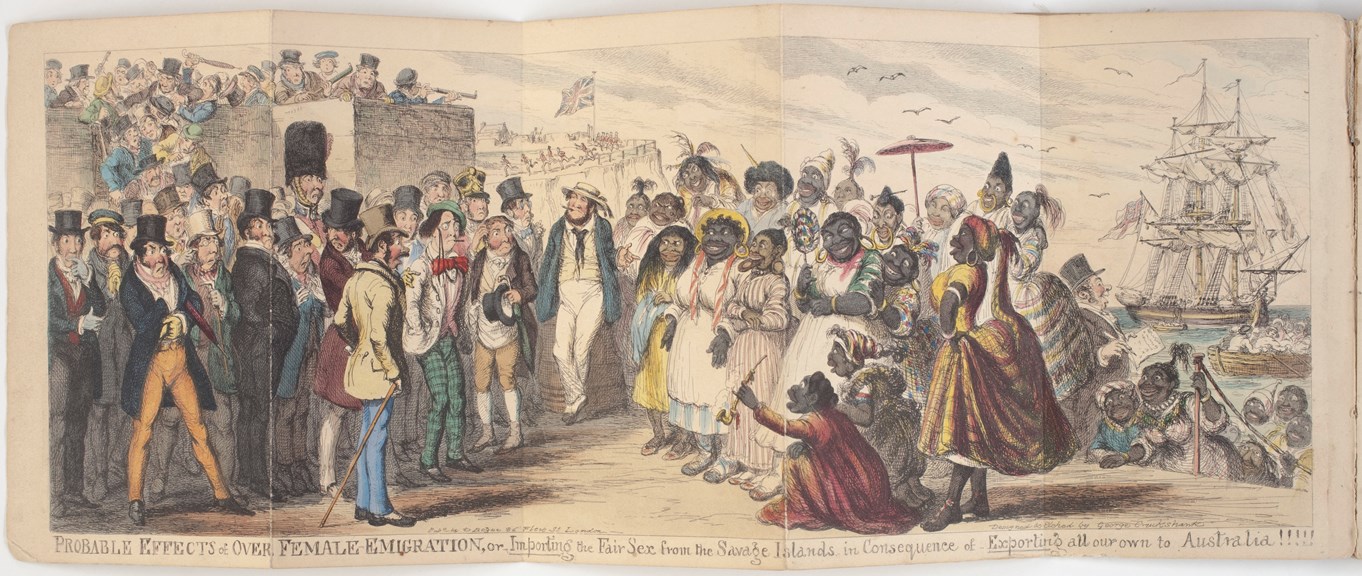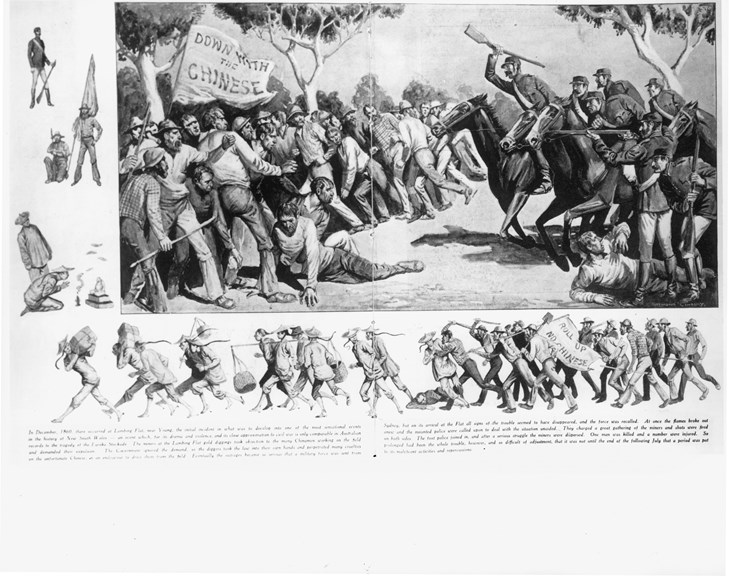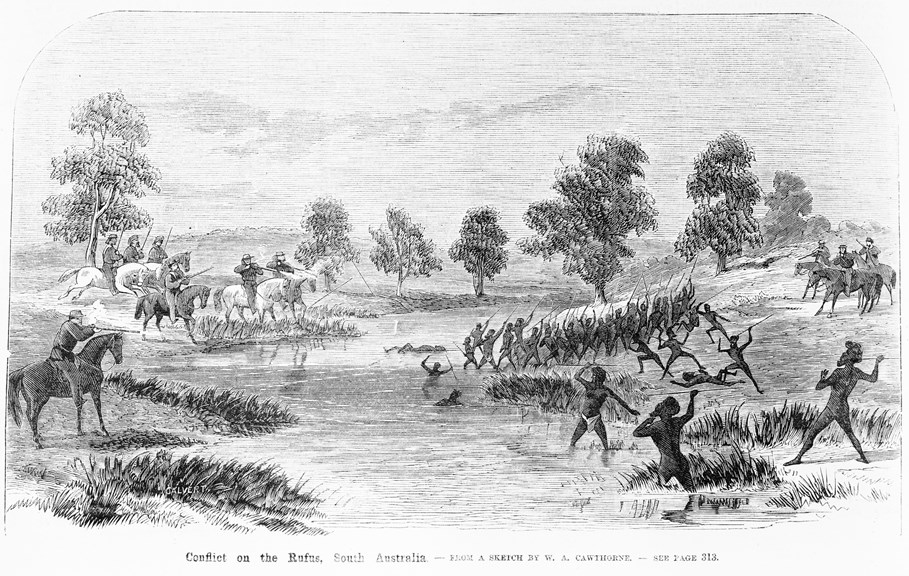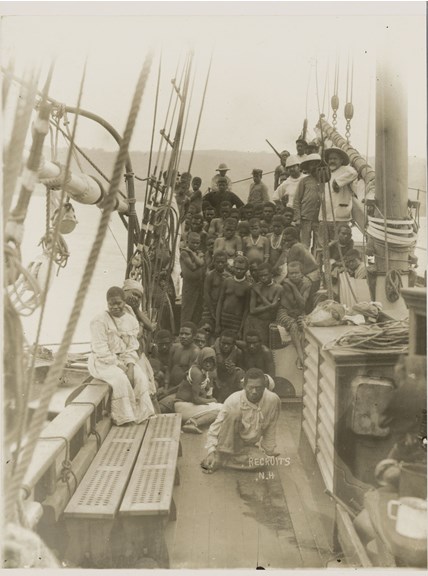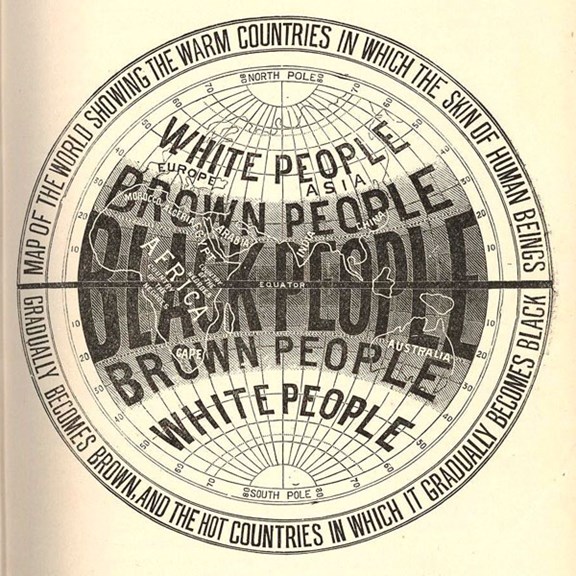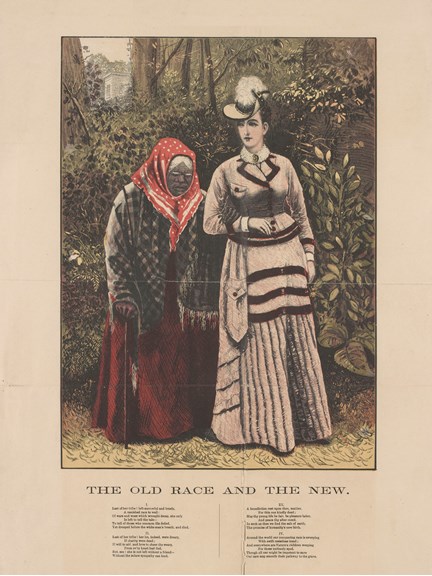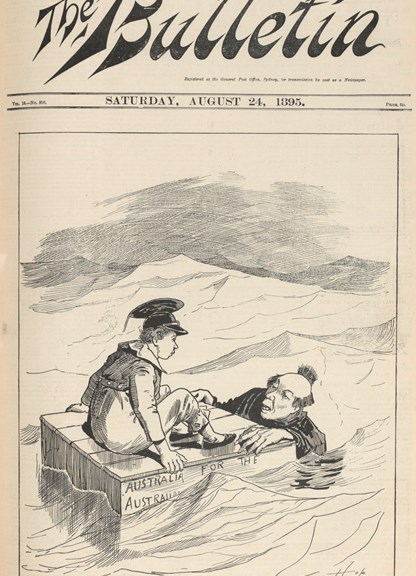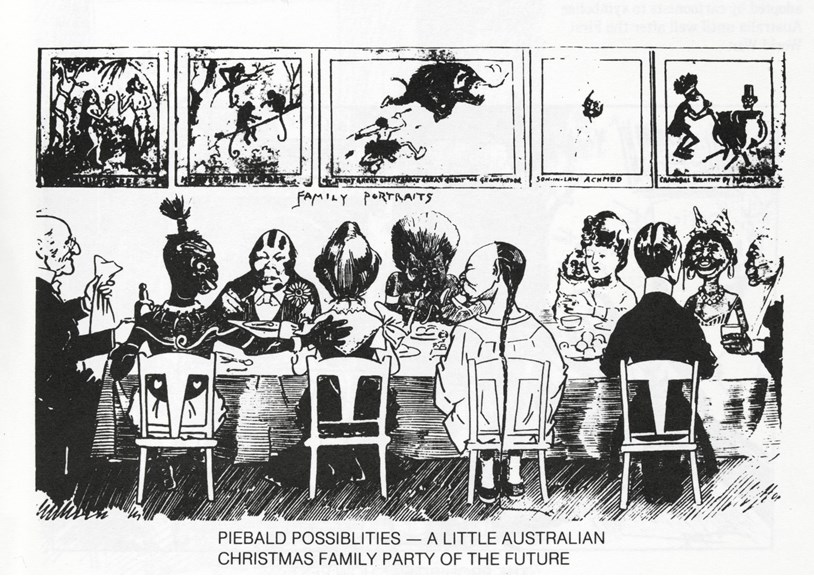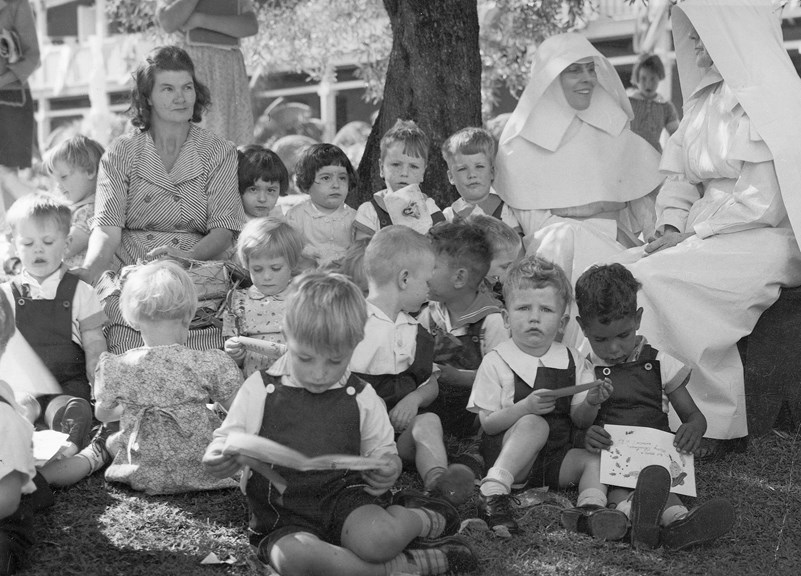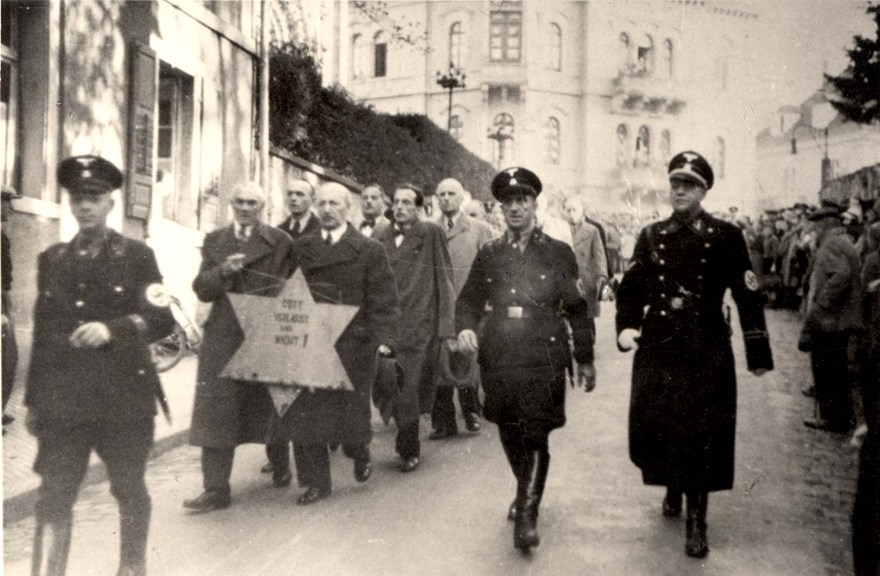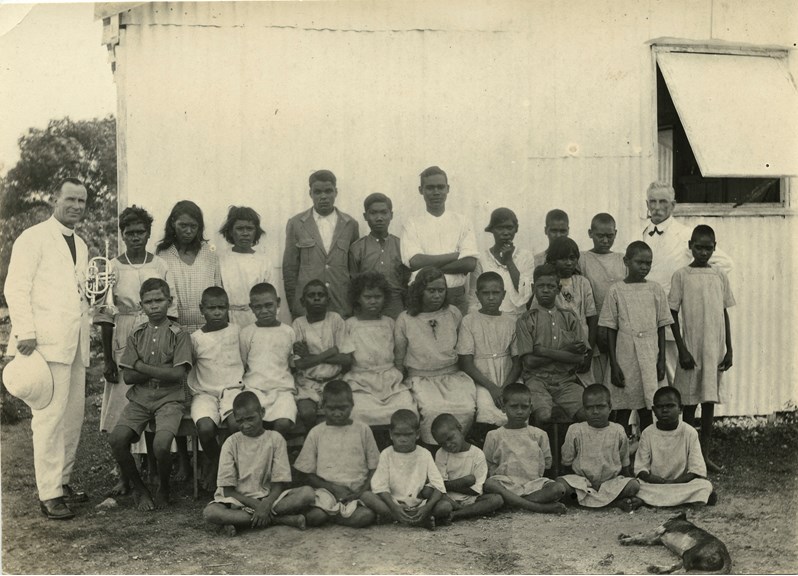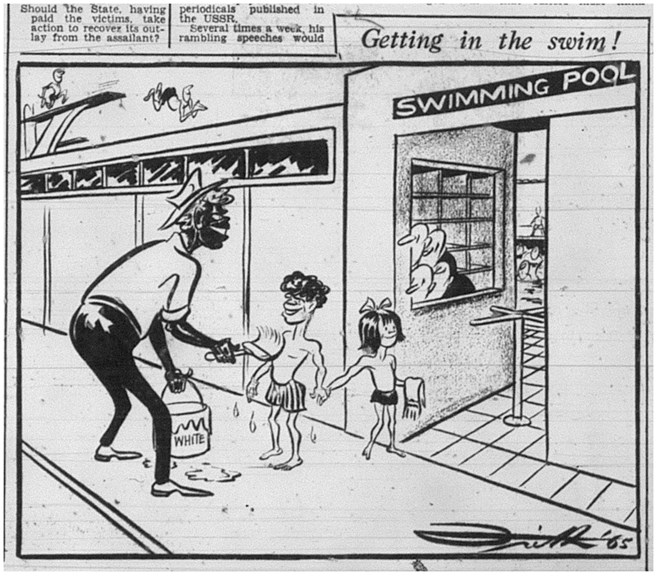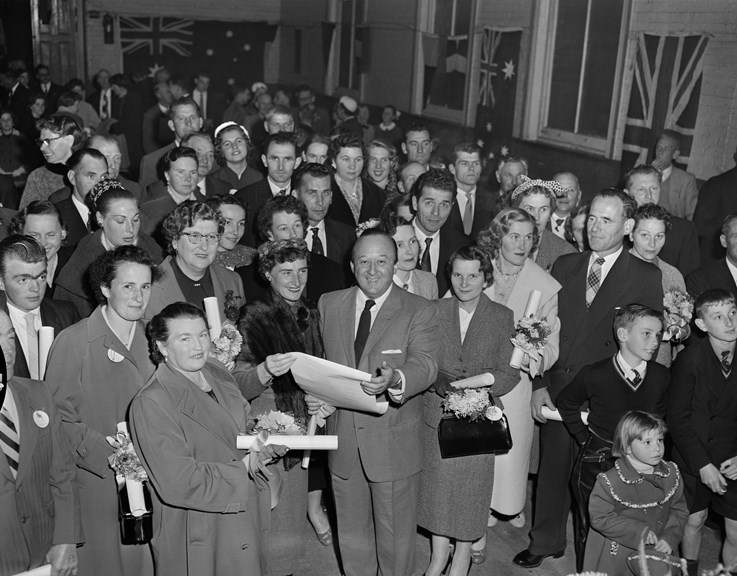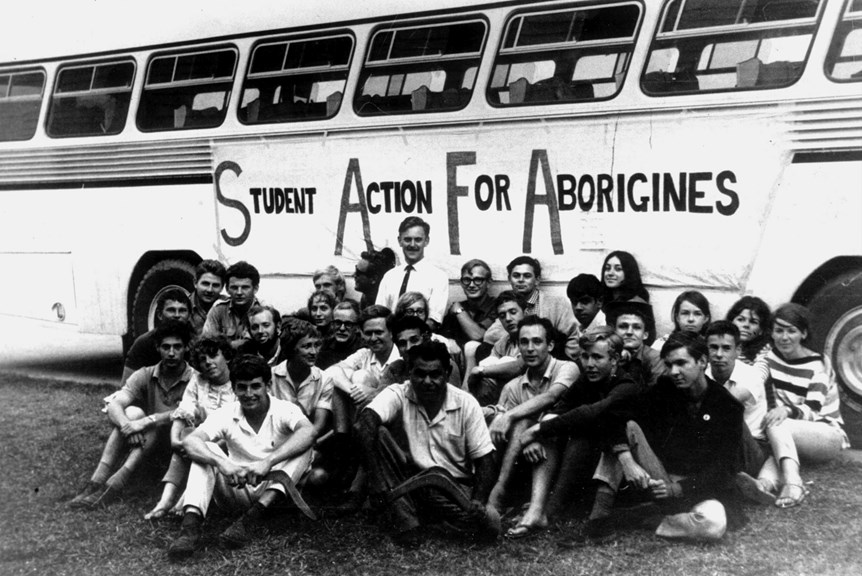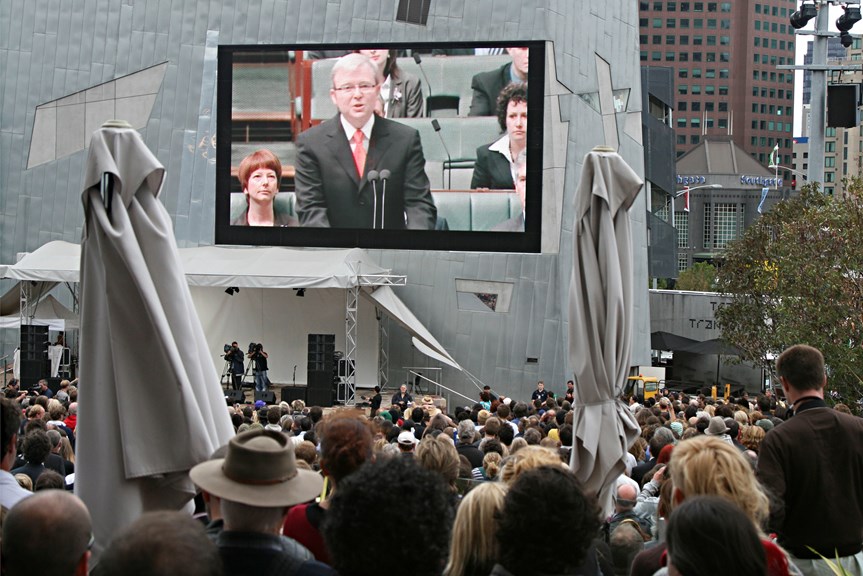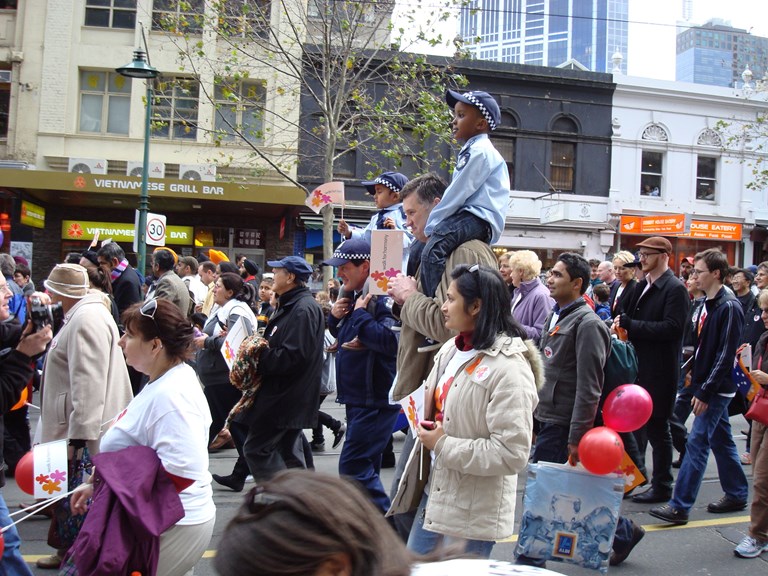Timeline
This timeline traces how prejudice has affected who we are, how we govern and what we believe.
For centuries science and politics have influenced how we think and feel about those who have been considered different, inferior, or threatening. Consider whether you think these attitudes continue to resonate today.
Scientists continue to debate racial hierarchies, always with white men at the top. The theory of eugenics develops, emphasising racial purity and controlled breeding. In Australia this theory underpins the removal of Aboriginal children from their families. Segregation, restrictive immigration policies and massacres of Indigenous peoples contribute to the maintaining of a white racial and economic pecking order.
1848–55
Californian gold rush attracts tens of thousands of people from Europe, Latin America, Australia and China. In 1850 California introduces a new tax on alien gold miners, targeting the Chinese.
1851
Gold is discovered in New South Wales and Victoria, followed by other colonies until 1890s. The gold rushes result in mass migration from the British Isles, Europe, America and China.
1855
Victoria introduces the first Immigration Restriction Act in Australia aimed at limiting Chinese immigration. Other Australian colonies soon follow.
1857
Chinese miners outnumber European miners by at least three to one at the Buckland River goldfields in Victoria. This sparks racial tensions culminating in a violent anti-Chinese riot in which at least three Chinese miners are killed.
1860s
Local Indigenous populations continue to resist settlers and immigrants. Killings of local Aboriginal populations continue across Australia until the early 1900s.
Queensland sugar plantation owners commence forcible labour recruitment of Pacific Islanders. About 62,000 'kanakas' are 'blackbirded' (kidnapped) before the practice ceases in 1901.
1868
A close relationship between the 'worst' of the human races and the 'best' of the apes is claimed by German scientist Ernst Haeckel in Natürliche Schöpfungsgeschichte.
1871
Charles Darwin's Descent of Man is published which would fundamentally influence political and social theories about the origins, evolution and hierarchies of human races. 'Although the existing races of man differ in many respects, as in colour, hair, shape of skull, proportions of the body, etc, yet if their whole organisation be taken into consideration they are found to resemble each other in a multitude of points.'
1880s
Melbourne entrepreneur Edward Cole begins producing pamphlets, essays and medals promoting world peace and arguing against racially-based immigration policies. His medal offers a positive interpretation of Darwin's theory of the origins of the human species.
1883
The term 'eugenics' is coined by British anthropologist Francis Galton, a belief in human improvement through selective breeding: 'What is termed in Greek, 'eugenes' namely, good in stock, hereditarily endowed with noble qualities.'
1886
Aboriginal people are believed to be a dying race, requiring children of mixed descent to be absorbed into the 'white' community. The Aborigines Actofficially commences the removal of Aboriginal children in Victoria.
William Barak, head man for the Woirurrung at Coranderrk Aboriginal Reserve near Healesville petitions the Victorian Government for better rights and land on behalf of the residents. 'We Blacks of Aboriginal Blood, wish to have now freedom for all our life time.'
1888
The phrase 'White Australia policy' first appears in William Lane's publication The Boomerang in Brisbane.
1893
Charles Pearson, Australian historian, educationist, politician and journalist,
publishes National Life and Character. A Forecast, in which he predicts that the 'higher races of men' would within a few decades find themselves 'elbowed and hustled and perhaps even thrust aside' by people whom they had assumed to be innately servile. The ideas would be taken up by future prime ministers Edmund Barton and Alfred Deakin to defend the White Australia policy.
Ideas about whiteness and the value of racial purity inform restrictive immigration policies in the USA, South Africa, Canada, New Zealand and Australia. Thousands of British children are sent to Australia, Rhodesia, Canada and the USA, whom Australia gladly accepts because of this desire for a 'white' population. These ideas are also used to justify the continued removal of Aboriginal children from their families. In Germany, extreme manifestations of policies of racial purity lead to the Jewish Holocaust during World War II.
1901
The newly federated Australia passes the Immigration Restriction and Pacific Island Labourers acts, based on the 1896 Immigration Restriction Act (USA) and the 1897 Natal Immigration Restriction Bill (South Africa). Referred to as the ‘White Australia’ policy it includes a dictation test for the sole purpose of excluding immigrants deemed undesirable. 'There is no racial equality. There is that basic inequality. These races are, in comparison with white races... unequal and inferior.' Sir Edmund Barton, Prime Minister of Australia, 1901
1905
The first modern intelligence test is created. Credited to French psychologist Alfred Binet, it is known as the Binet-Simon intelligence scale. Intelligence testing would be used to justify racial discrimination. It is later accepted that education and economic status are also factors that affect test results.
1910s–30s
Campaigns aimed at increasing and improving the local white population are run by Australian women's organisations. They support eugenic measures which exclude 'unfit' white migrants and produce 'well born' white children.
'In Australia there was power to make the race we wished. It should not only be a white race, but a race of the best whites.' Mrs Priestly, Mothers' Clubs of Victoria, 1935.
1911
Britain begins sending child migrants to Australia, resulting in about 6,500 children often being subjected to enforced labour and appalling treatment in the interests of building a 'white' Australia. The practice continues until 1970.
'At a time when empty cradles are contributing woefully to empty spaces, it is necessary to look for external sources of supply. And if we do not supply from our own stock we are leaving ourselves all the more exposed to the menace of the teeming millions of our neighbouring Asiatic races.' His Grace the Archbishop of Perth, 1938.
1933–45
Adolf Hitler reveals his obsession with racial purity in his 1925-26 publication, Mein Kampf. These ideas are based on the principles of eugenics and draw on interpretations of Darwinian ideas of fitness and progress. The subsequent Holocaust claims the lives of 6 million Jews. Also targeted, amongst others, are 'gypsies', homosexuals, and people with disabilities.
1937
At a national Native Welfare Conference on assimilation policy, Augustus Neville, West Australian Chief Protector of Aborigines (1922-40) asked: 'Are we going to have a population of one million blacks...or are we going to merge them into our white community and eventually forget that there were ever any?'
1938
Evian conference of allied nations reveals an international unwillingness to accept Jewish refugees. Australia reluctantly agrees to accept 15,000 but only 7,500 arrive by 1939 before the doors are closed.
1944
DNA as human genetic material is isolated by Oswald Theodore Avery, Colin McLeod and Maclyn McCarty. From the 1940s, evolutionary scientists reject the idea that race is based on physical characteristics.
Scientific thought shifts away from using ‘race’ to define human variation. After World War II, international declarations are made relating to discrimination and human rights. While the doors to European migrants widen, Australian Government preferences for a dominant British-based population see migrant selection and assimilation policies continue well into the 1960s. Assimilation policies relating to Aboriginal people also persevere but the fight to recognise Indigenous rights in Australia gains momentum, partly influenced by international civil rights movements. Government policies embracing a culturally diverse population are evident in the 1970s through increased Indo-Chinese refugee intakes and multicultural programs.
1947
Efforts to perpetuate a white Australia see the start of a massive assisted British immigration scheme, as well as the acceptance of refugees from Baltic countries. 'It is my hope that for every foreign migrant there will be ten people from the United Kingdom.' Arthur Calwell, Minister for Immigration, 1946.
1948
A policy of legal racial segregation, known as apartheid, is enforced by the National Party government of South Africa until 1994. In Australia, segregation is imposed unofficially in public places such as theatres and swimming pools.
Australia signs the Universal Declaration of Human Rights. In the aftermath of World War II and the Holocaust, nations begin to dismantle discriminatory immigration policies and introduce bills of rights.
1950
UNESCO releases its statement on race: 'At the moment, it is impossible to demonstrate that there exist between 'races' differences of intelligence and temperament other than those produced by cultural environment.'
1950s
Citizenship ceremonies are embraced by local residents across Australia, who organise events for recently arrived migrants in council and community halls.
1951
Australia is a signatory to the UN Convention on Genocide, despite the continuing removal of Aboriginal children from their parents which under Article 2 (e) is considered to be a form of genocide.
1953
The double helix structure of DNA is identified by James D. Watson and Frances Crick. From the 1970s, genetic research begins to map the history of human populations.
1955–68
Civil Rights movements in the UK and USA influence Aboriginal political activism in Australia. In 1963 Martin Luther King advocates for racial harmony in his famous 'I have a dream' speech at the March on Washington for Jobs and Freedom.
1965
Australia is a signatory to the International Convention on the Elimination of all forms of Racial Discrimination. The 1960s see several UN conventions ratified by Australia in relation to discrimination and civil and political rights.
Charles Perkins leads a 'freedom ride' by Aboriginal people and non- Aboriginal students through New South Wales in support of Aboriginal rights.
1967
National referendum gives the Commonwealth power to make and override state laws for Aboriginal people, and to count Aboriginal people in the national census.
1972
Commonwealth government establishes a policy of 'self-determination' to restore to Aboriginal people a voice in their economic, social, political and land ownership affairs.
1973
The 'White Australia' policy officially ends and Al Grassby, Minister for Immigration, launches the policy of multiculturalism.
1975
The Racial Discrimination Act is passed in the Federal Parliament. The Australian Senate unanimously endorses a resolution tabled by Aboriginal Senator Neville Bonner acknowledging prior ownership of this country by Aboriginal peoples and seeking compensation for their dispossession.
Saigon falls and a draconian communist government in Vietnam takes power. People flee and begin to arrive in Australia by boat and through refugee camps. Malcolm Fraser’s Liberal government adopts a generous refugee intake policy, broadly accepted by the Australian community.
Multiculturalism is embraced and then challenged. Global rights of Indigenous peoples extend to land rights and national apologies. The Cold War ends but Western nations identify new adversaries in Muslim and Middle Eastern nations through two Gulf Wars and war in Afghanistan. Politicians, public figures and the media participate in debates about migration, asylum seekers and population. Anxiety about threats to traditional notions of Australian identity focuses on migrants from Asia, Africa and Muslim nations. Australians continue to grapple with complex issues of living in a culturally diverse society.
1984
Noted Australian historian Geoffrey Blainey makes a speech criticising Asian migration: 'Rarely in the history of the modern world has a nation given such preference to a tiny ethnic minority of its population as the Australian Government has done in the past few years, making that minority the favoured majority in its immigration policy.'
1992–96
Series of landmark decisions officially recognise the land rights of Indigenous peoples in Australia. These include the Commonwealth Mabo High Court decision, 1992; Commonwealth Native Title Act 1993 and the Federal High Court Wik decision, 1996.
1996
Independent member for Oxley Pauline Hanson gives her maiden speech to Parliament. She expresses fears of an Aboriginal 'land grab' and 'being swamped by Asians'. Her sentiments appeal to parts of the community resulting in the establishment of the One Nation Party. Many others are deeply offended and protests ensue.
1998
Commonwealth Native Title Act Amendment reduces Indigenous Australians’ access to and control over lands.
2001–02
Terrorist attacks in the USA on 11 September, 2001 and the Bali bombing on 12 October, 2002 inflame global anxiety about Muslims. In Australia, anti-terrorism laws are passed and the issue of asylum seekers escalates.
2003
US Government-backed Human Genome Project completes the mapping of the human genome, identifying all human genes.
2005–11
The Genographic Project seeks to map the migratory history of the human species by analysing the DNA from hundreds of thousands of people worldwide.
October–November 2005
Race riots break out in Paris and Birmingham due to discrimination against Muslims and people of African origin, and tensions between the African and South Asian communities.
December 2005
A rally in support of local life savers escalates into a riot at Cronulla, New South Wales due to tensions between local Anglo-Australian residents and Lebanese Australians from south of Sydney. Prior to the rally, radio broadcaster Alan Jones announces: 'My suggestion is to invite one of the biker gangs to be present in numbers at Cronulla railway station when these Lebanese thugs arrive. It would be worth the price of admission to watch these cowards scurry back onto the train for the return trip to their lairs... Australians old and new shouldn’t have to put up with this scum.'
2007
Over 1000 people protest against the building of a private Islamic school in Camden, New South Wales. Sudanese migration is reduced because, according to Kevin Andrews, Minister for Immigration, they 'don't seem to be settling and adjusting into the Australian way of life.'
Australian Government introduces the Northern Territory National Emergency Response ('intervention') to protect Aboriginal children from sexual abuse and family violence. It is a controversial policy, requiring the suspension of the 1975 Racial Discrimination Act.
2008
Prime Minister Kevin Rudd apologises to the Stolen Generations: 'We apologise especially for the removal of Aboriginal and Torres Strait Islander children from their families, their communities and their country.'
2009
Indian students protest against violent attacks in Melbourne and Sydney. 'People are scared. Everyone has roommates and classmates who have been attacked.' Srikanth Guttapalia, 2009
'There is no place in our society for any crime which is racially based.' John Brumby, Premier of Victoria, 2009
2009-10
Australia and Britain apologise to child migrants who were brought to Australia in order to increase Australia’s white population during the 20th century.
2010
A law is passed in Arizona USA enabling police to stop and detain people they suspect are illegal immigrants, provoking racial profiling concerns. France deports Roma gypsies to Romania, destroying three hundred camps. In Australia, the issue of asylum seekers resurfaces in the lead up to the Federal election.
2011
Political leaders in Europe and the UK describe multiculturalism as divisive and a failure, as thousands seek asylum from political unrest in North Africa and the Middle East. The Australian Government reaffirms multiculturalism as a key social policy despite some negative reports in the Australian media.
Today
Today Australia still has no Bill of Rights.
Under the Migration Act, disability is still taken into consideration in assessing migrants for entry into Australia. Consequently, the Migration Act is exempt from the Disability Discrimination Act (section 52).
Governments, community organisations and individuals throughout Australia continue to advocate effectively for social justice, equality and diversity.

